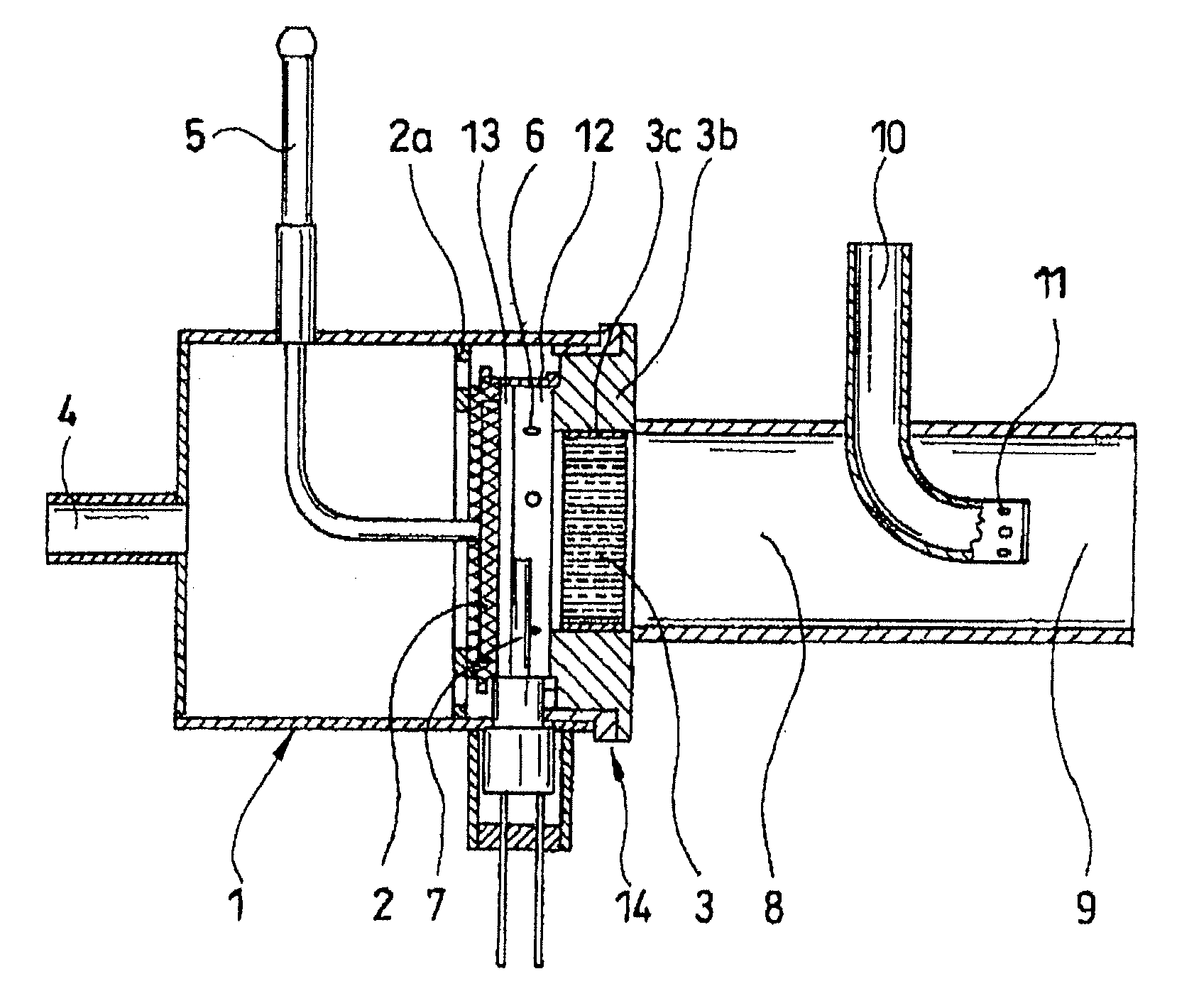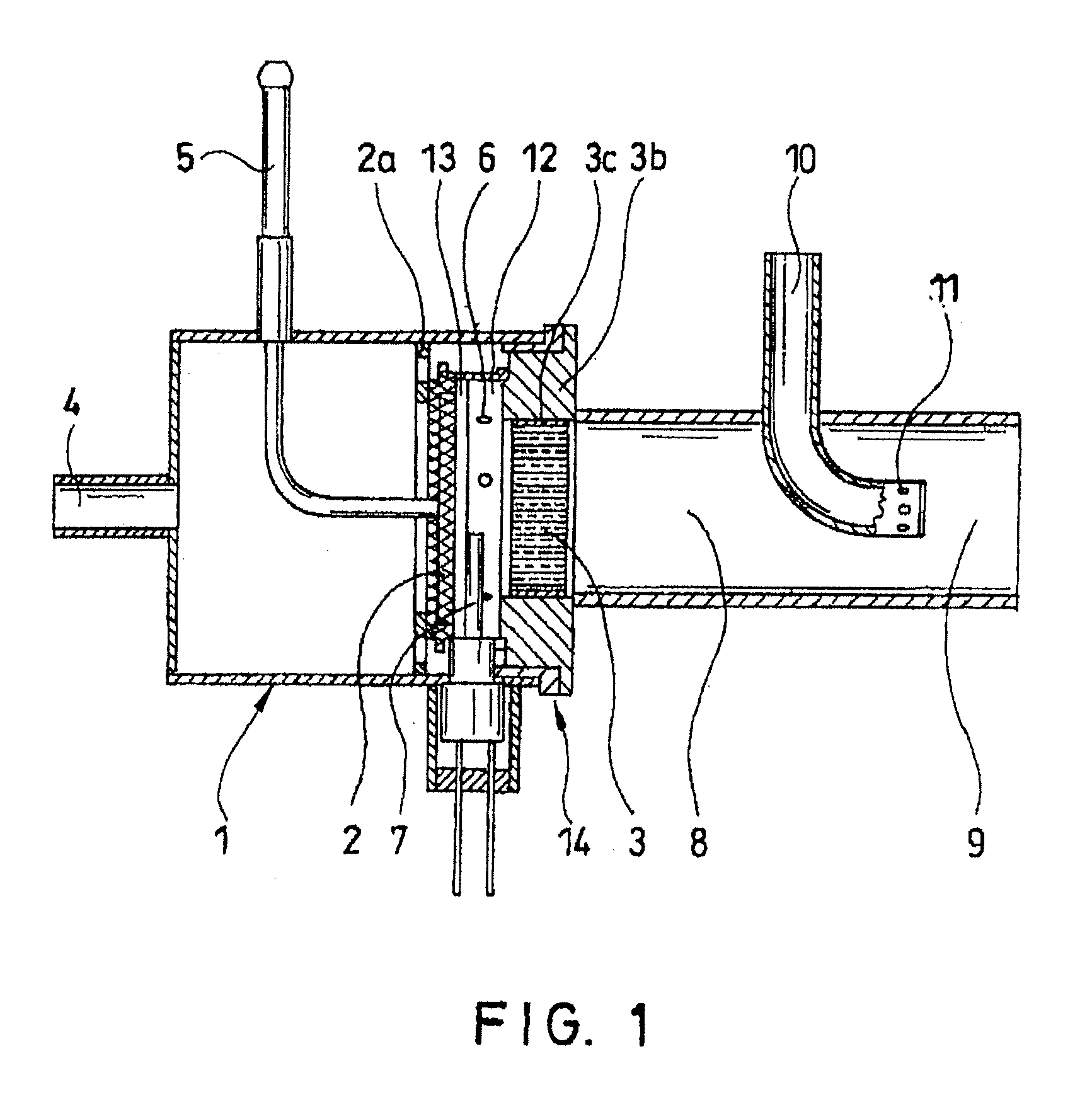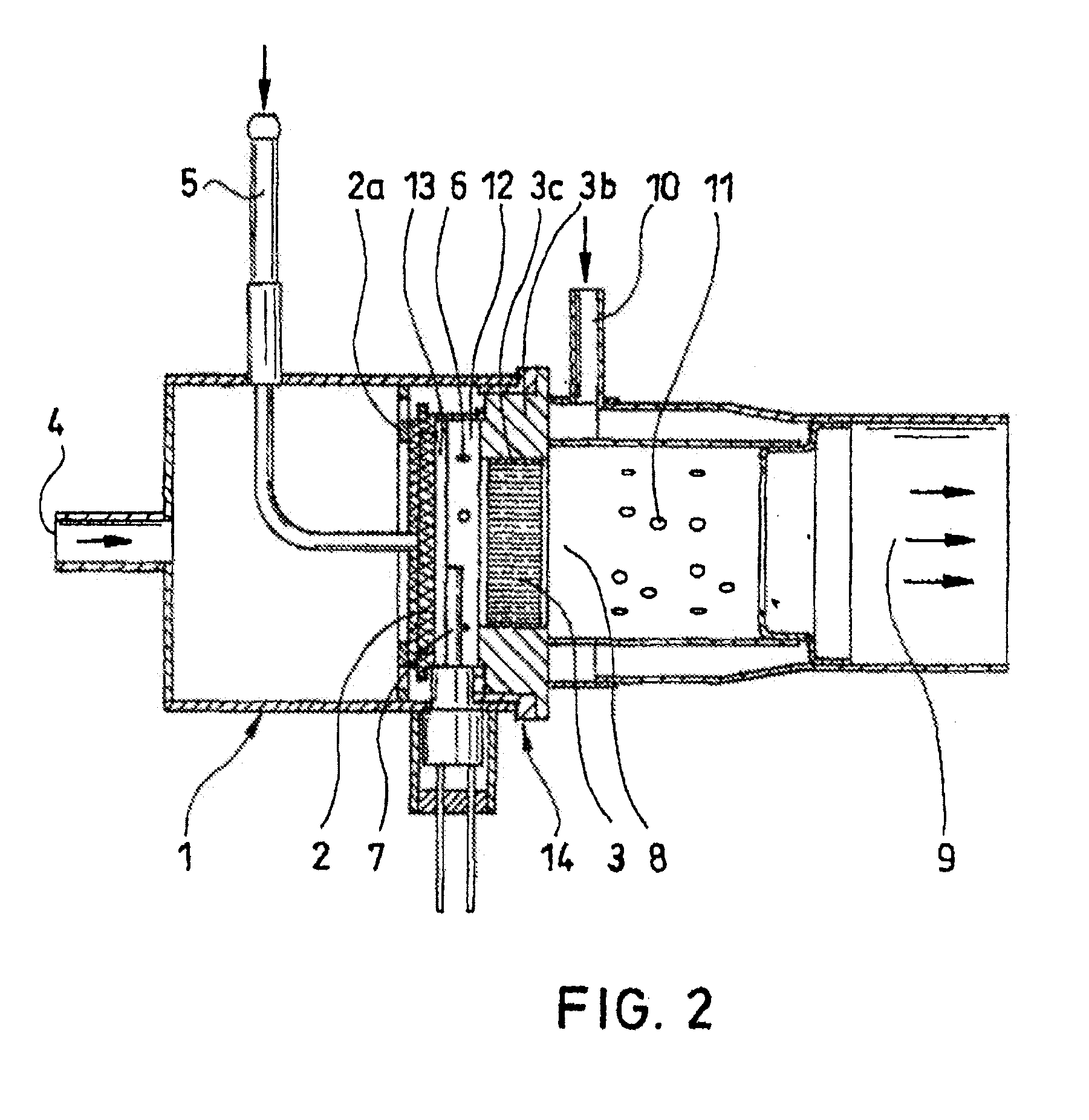Device and Method For Preparing a Homogeneous Mixture Consisting of Fuel and Oxidants
a technology of oxidants and devices, which is applied in the direction of gaseous fuels, burner details, capillary burners, etc., can solve the problems of reducing the useful life, difficult stable operation, and evaporating fuel through non-woven metal fiber mats, so as to reduce the thermal stress of surrounding components, reduce the sooting tendency of the system, and reduce the effect of thermal stress
- Summary
- Abstract
- Description
- Claims
- Application Information
AI Technical Summary
Benefits of technology
Problems solved by technology
Method used
Image
Examples
first embodiment
[0037]Referring now to FIG. 1, there is illustrated a system for providing a homogenous fuel / air mixture on the basis of liquid fuel. The core component of the system for providing a homogenous fuel / air mixture on the basis of liquid fuel as shown in FIG. 1, as an example, is the fuel evaporator 2 arranged in an evaporator element 1, attached to which is a supporting element 3b for mounting a packed structure 3 which may be jacketed by a fiber mat 3c for mechanical fixation and thermal insulation respectively.
[0038]Liquid fuel and oxidant are supplied to the system via the fuel feeder 5 and oxidant feeder 4 respectively. The oxidant, preferably air, with optional additives, such as, e.g., steam, enters via radially inwardly directed ports 6 into the mixing chamber 12 where the oxidant is mixed with the fuel that has been evaporated in an evaporation chamber 13 that is located upstream of the mixing chamber 12. In general, the evaporation chamber 13 and the mixing chamber 12 form a s...
second embodiment
[0041]Referring now to to FIG. 2, there is illustrated a diagrammatic representation of a system for providing a homogenous fuel / air mixture on the basis of liquid fuel. Unlike the embodiment of FIG. 1, the supply of the oxidant flow in the second reaction zone is multiply stepped and oriented radially inwards via a plurality of ports 11.
[0042]Referring now to FIG. 3, there is illustrated a graph plotting temperature and output curves as a function of time as is relevant to a device in accordance with the invention. Shown are the exemplary results obtained with such a system with diesel evaporation in air. The packed structure 3 employed contains a catalyst which partially oxidizes the diesel fuel so that a hydrogen-rich gas mixture materializes. This can be made use of in, e.g., an auxiliary power unit (APU) for generating electricity and heat. FIG. 3 plots the temperatures as measured in the evaporator chamber (curve a) and in the catalyst (curve b) for the thermal outputs (curve ...
PUM
| Property | Measurement | Unit |
|---|---|---|
| Diameter | aaaaa | aaaaa |
| Diameter | aaaaa | aaaaa |
| Temperature | aaaaa | aaaaa |
Abstract
Description
Claims
Application Information
 Login to View More
Login to View More - R&D
- Intellectual Property
- Life Sciences
- Materials
- Tech Scout
- Unparalleled Data Quality
- Higher Quality Content
- 60% Fewer Hallucinations
Browse by: Latest US Patents, China's latest patents, Technical Efficacy Thesaurus, Application Domain, Technology Topic, Popular Technical Reports.
© 2025 PatSnap. All rights reserved.Legal|Privacy policy|Modern Slavery Act Transparency Statement|Sitemap|About US| Contact US: help@patsnap.com



